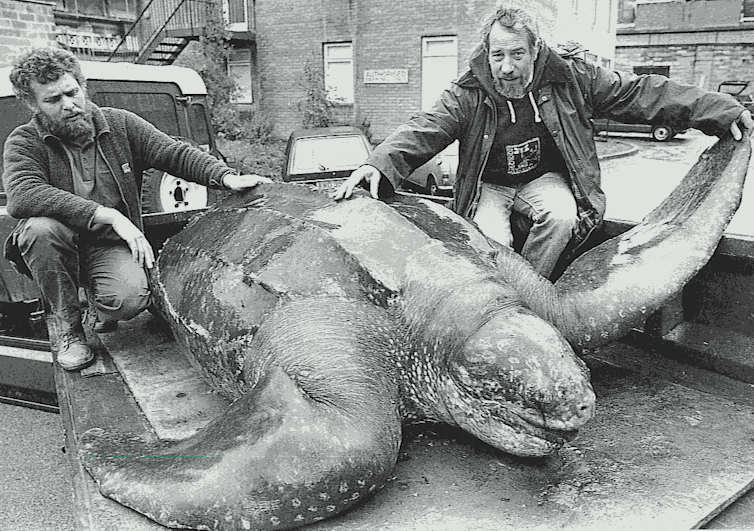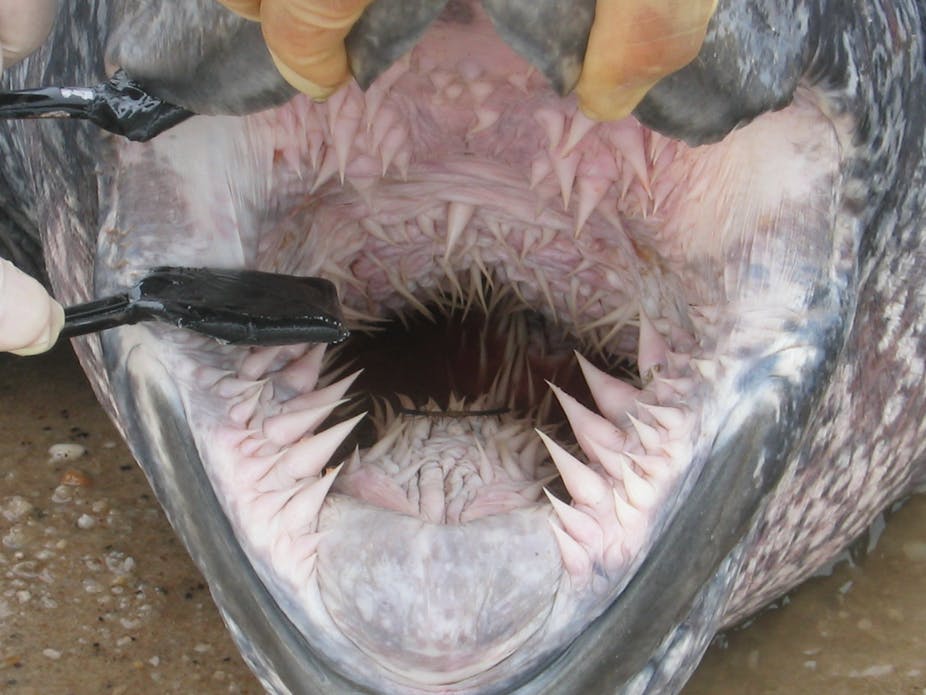Going to the beach this summer? If you’re in southern Australia, keep your eyes peeled for the world’s largest turtle, the leatherback. If you do, you can report sightings to researchers at Deakin University, which will help scientists answer vital questions about these creatures.
In parts of Australia – New South Wales, Victoria, South Australia and Tasmania – you might think you’re far from turtle habitats. In fact you have the best chance of seeing the largest turtle, and the fourth-heaviest reptile, in the world.
Leatherbacks swim thousands of kilometres in their lives and satellite tracking has recently shown that the southern coasts of Australia are an important feeding ground for these giants. Unfortunately, leatherback turtle populations are in serious decline.

While we know that these giant turtles come to Australian waters regularly, we don’t know enough about this species to protect them fully.
Turtles at sea are very difficult to study, but there are millions of us who visit the coast every year to swim, to surf, to fish or just to watch the sunset.
A surprising discovery
Surprisingly, these turtles rarely breed in Australia. You also won’t see them in the usual hot-spots for turtle sightings either, such as the Great Barrier Reef.
Leatherbacks nest on beaches in Indonesia, Papua New Guinea, the Solomon Islands and Vanuatu. Outside of the breeding season however, the adults travel several thousand kilometres, with many swimming south in the East Australian current to visit our coast. So Australia has an important role to play in reducing threats to these turtles.
Until recently, we didn’t realise just how many leatherback turtles there were in south Australian waters. New research has involved a combination of satellite tracking of leatherbacks, and compiling 125 years of direct observations, to study their migration.
Many of the direct observations unfortunately came from dead turtles that drowned after becoming tangled in fishing gear.

Bycatch threat
Australia has national and international obligations to protect endangered species that migrate widely, as a signatory to the Convention of Migratory Species and the Indian Ocean - South East Asian Marine Turtle MoU.
The Australian Environment Protection and Biodiversity Conservation (EPBC) Act also lists them as an Endangered species. The Australian Government has a Marine Turtle Recovery Plan (currently under revision) to try to reduce the threats faced by the leatherback turtle.

Although bycatch mitigation and mandatory catch reporting occurs in some Australian fisheries, there is no concerted work to identify how turtle deaths related to fishing gear might be reduced. This is alarming.
To this end, details of how to identify leatherback turtles, maps of where they have been sighted previously, and details on how to report new observations are now detailed online as part of the Southern Australian Sea Turtle project at Deakin University.
This research is led by Deakin’s Warrnambool campus, which is close to where leatherback turtles have been seen, both in the surrounding seas and on local beaches.

Why do leatherbacks visit Australia?
If you look in the mouth of a leatherback turtle, you might be able to guess the answer to this question. They love to eat jellyfish, so their mouths are full of backward facing spines which help stop the jellyfish slipping away as they are being swallowed. They wander the oceans in search of patches of jellyfish and these patches tend to be in cooler, more productive waters, like off the coast of southern Australia.
Leatherbacks are unique among the sea turtles in being able to live happily in cool waters down to at least 15 degrees. At these temperatures, most other sea turtles would become lethargic, stop feeding and ultimately die.
However, because of their large size – they weigh up to 500 kilograms and can be 2 metres long – and their unique physiology, they can stay warm in our cool waters each summer and gorge on jellyfish.
There’s not much energy in a jellyfish so when they find a good patch an adult leatherback can eat 100 kilograms or more in a day. This helps them put on weight and sustains them through their return migration to the tropics to breed.
So, next time you visit the coast of southern Australia keep an eye out for the largest turtle in the world. Let us know if you see one by following this link and clicking “report a sighting”!

